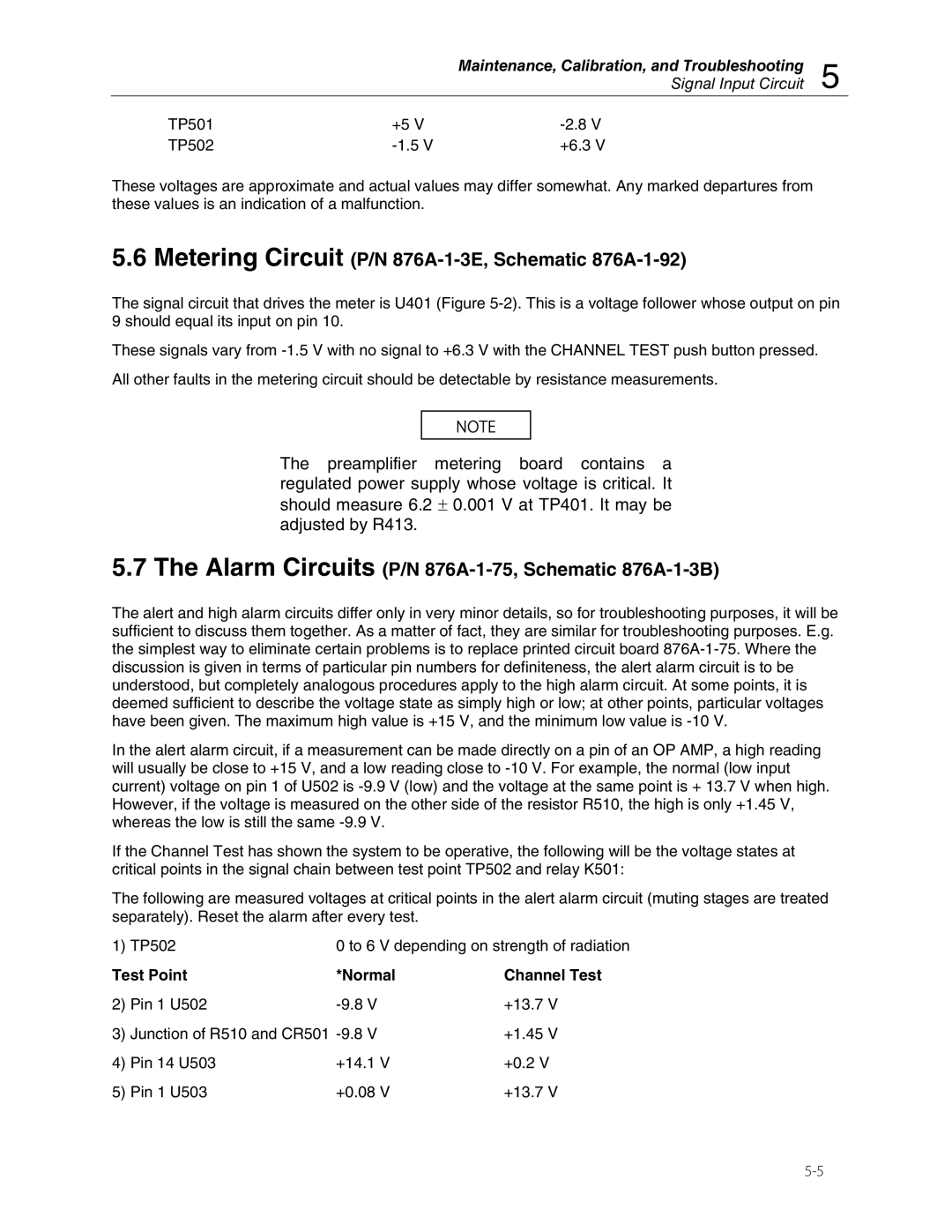|
| Maintenance, Calibration, and Troubleshooting | 5 |
|
| Signal Input Circuit | |
TP501 | +5 V |
| |
TP502 | +6.3 V |
|
These voltages are approximate and actual values may differ somewhat. Any marked departures from these values is an indication of a malfunction.
5.6Metering Circuit (P/N 876A-1-3E, Schematic 876A-1-92)
The signal circuit that drives the meter is U401 (Figure
These signals vary from
All other faults in the metering circuit should be detectable by resistance measurements.
![]()
![]()
![]()
![]() NOTE
NOTE![]()
![]()
![]()
![]()
![]()
The preamplifier metering board contains a regulated power supply whose voltage is critical. It should measure 6.2 ± 0.001 V at TP401. It may be adjusted by R413.
5.7The Alarm Circuits (P/N 876A-1-75, Schematic 876A-1-3B)
The alert and high alarm circuits differ only in very minor details, so for troubleshooting purposes, it will be sufficient to discuss them together. As a matter of fact, they are similar for troubleshooting purposes. E.g. the simplest way to eliminate certain problems is to replace printed circuit board
In the alert alarm circuit, if a measurement can be made directly on a pin of an OP AMP, a high reading will usually be close to +15 V, and a low reading close to
If the Channel Test has shown the system to be operative, the following will be the voltage states at critical points in the signal chain between test point TP502 and relay K501:
The following are measured voltages at critical points in the alert alarm circuit (muting stages are treated separately). Reset the alarm after every test.
1) | TP502 | 0 to 6 V depending on strength of radiation | ||
Test Point | *Normal | Channel Test | ||
2) | Pin 1 U502 | V | +13.7 V | |
3) | Junction of R510 and CR501 | V | +1.45 V | |
4) | Pin 14 U503 | +14.1 V | +0.2 V | |
5) | Pin 1 U503 | +0.08 V | +13.7 V | |
